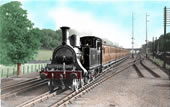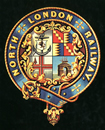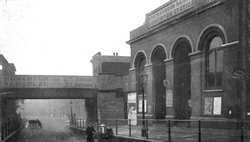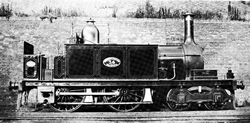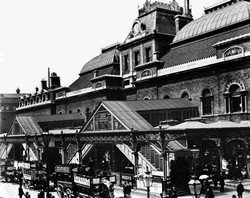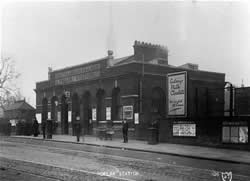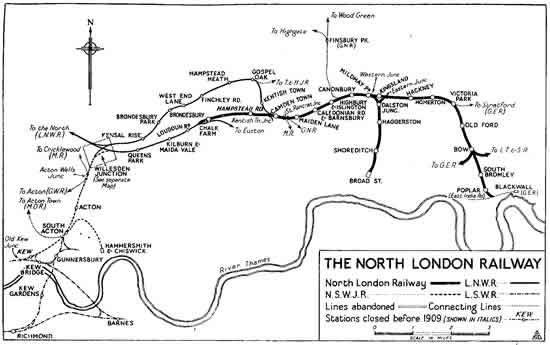
A Brief History of the North London Railway
Early Days
The North London Railway began life in 1846 as the East and West India Docks and Birmingham Junction Railway, intended to link the London and Birmingham Railway with the docks at Poplar. Before it was completed in 1850, overtures made by the small London and Blackwall Railway, which was anxious to expand, saw the introduction of a passenger service from its terminus at Fenchurch Street to Camden. In fact goods traffic was not carried for another year or so.
The company's name was changed to the more succinct North London Railway in 1853, and the same year, when the North and South Western Junction Railway opened from Willesden to Kew, the NLR was invited to extend its passenger trains to Kew via the L&NWR main line. A year later a connection was laid in by the Eastern Counties Railway (later to become the Great Eastern Railway) between Victoria Park and Stratford.
Expansion
A major extension of services took place in 1860, when the Hampstead
Junction Railway was opened from Camden to Willesden direct, and again
the NLR was asked to work the train service. With the increasing use of
Fenchurch street, relations with the London and Blackwall became
strained, and the NLR directors decided to build an independent line to
the City, and a new line, mostly on viaduct, was opened from Dalston to
Broad Street in late 1865.
A period of expansion of railways in the
late 1860s saw the opening of connections to the LT&SR at Bromley,
to Richmond from Acton via the L&SWR, and two with the newly built
Midland Railway London extension one near St. Pancras the other at
Acton Wells. In 1875 the Great Northern opened a chord line at
Canonbury, allowing NLR trains from Broad Street to run as far as
Potter's Bar, Barnet and Enfield. Two years later another curve was
laid in at Acton Wells to allow GWR trains to reach the docks. By 1900,
the NLR had connections with the Great Eastern, Great Northern, Great
Western, L&NWR, L&SWR, LT&SR, Midland and Metropolitan
District Railways, with nearly 50 miles of running powers, compared
with the 13 miles it actually owned.
Unusually for such a small railway, the NLR built its own works at Bow,
and from 1863, constructed all its own locomotives, carriages and
wagons, and manufactured its own signalling equipment. In 1909 it owned
122 locomotives, 734 carriages and 568 wagons.
Into the 20th Century
Although at its peak the railway handled some 85,000 passenger journeys a day, by 1908 trams and underground railways were taking a growing proportion of them and it was arranged that the L&NWR would assume day-to-day control. It was not long before this railway saw the advantages of electrification, and the main line from Broad Street to Kew and Richmond was so equipped by 1916, although at the same time wartime restrictions had caused to curtailment of some services and the closure of stations - some for ever.
Grouping and Nationalisation
The Grouping of 1923 saw the NLR become a busy part of the new London, Midland and Scottish Railway. During the Second World War bombing caused severe damage, and resulted in the withdrawal of the Poplar passenger trains. Nationalisation soon followed in 1948, and with lack of investment the lines became run down and closure of all passenger services was threatened.
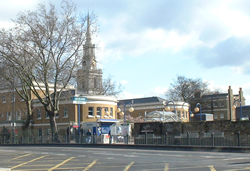
Regeneration
The creation of the Greater London Council and its generous grants soon saved the day, with more electrification and the restoration of the Stratford services. The creation of the Docklands Light Railway which took over and restored passenger services between Poplar and Bow, and the sectorisation of British Rail which allowed more local management has built on this success, and the subsequent extension of the East London Line to Dalston resulted in much of the old North London Railway being restored to use again.
